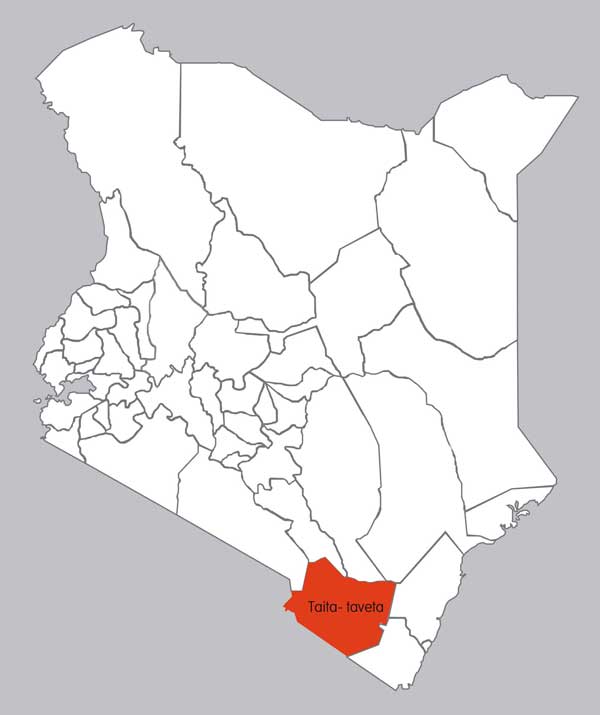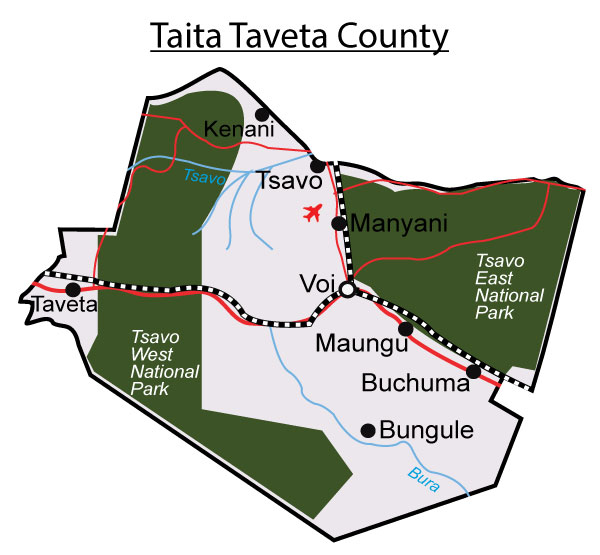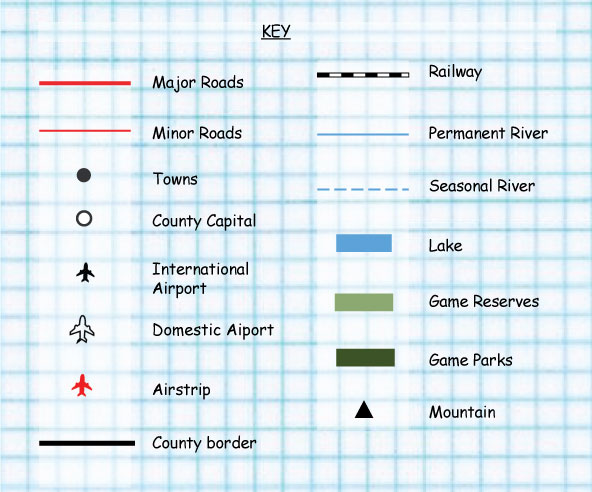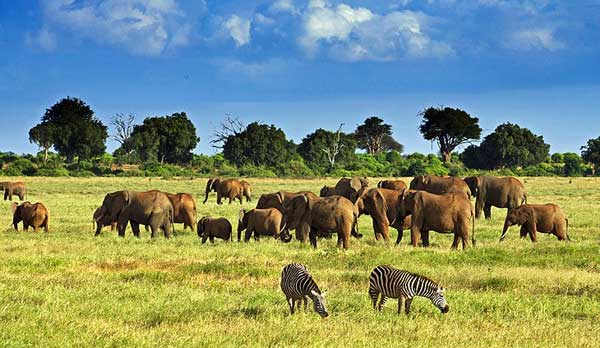It lies approximately 200 km northwest of Mombasa and 360 km southeast of Nairobi.
The capital is Mwatate, although it is the fourth largest town in the county after Voi, Wundanyi and Taveta in that order.
The population of the county 30 years ago was approximately 45, 000 persons but this has shot up to well over 250, 000 persons with population densities ranging from 3 persons per km2 to more than 800 persons per km2.
This is due to the varied rainfall and terrain with the lower zones receiving an average 440 mm of rain per annum and the highland areas receiving up to 1900 mm of rain. The district ranges in altitude from 500 m above sea level to 2, 228 m at Vuria Peak, which is the district's highest point.

Rivers
Lakes
Mountains
Hills
Plains
Valleys
The main types of natural vegetation
Map of distribution of the physical features.


Areas of high population density
Areas of low population density
Food
Dressing
Songs and dances
Traditional medical practices
The birth of the child was considered a major event. People come with gifts to see the newborn baby and special food and drinks are made and this child is blessed. The children are named after their dead relatives, naming after relatives, according to season depending on when the time the child is born – like Mwanjala (born during drought), Wamvua (born during rainy season), Tabu (born during troubles), Mwashimba (born when lions were seen).
Initiation is a right of passage from childhood to adulthood. After circumcision one starts being treated as an adult and one had to change his or her behaviour completely. Mostly they learn how to behave as responsible members of the community. Both boys and girls were circumcised using knives, we call it Kuchwa in Taita language
They were held after something special has taken place like a good harvest/music competition
The Taita are very much into their music and have many rituals and traditions based off music and dance. The most common dance of the Taita people is the pepo, the spirit possession dance. This dance is not only performed on national holidays.
Resources and economic activities
Main cash crops and food crops grown
The areas where the cash crops are grown
Types of livestock kept
Areas where fishing is practiced
Major forests
Type’s of wildlife
The game parks and reserves

The major tourist attractions
Taditional industries and the products of traditional industries.
The major trading centres include